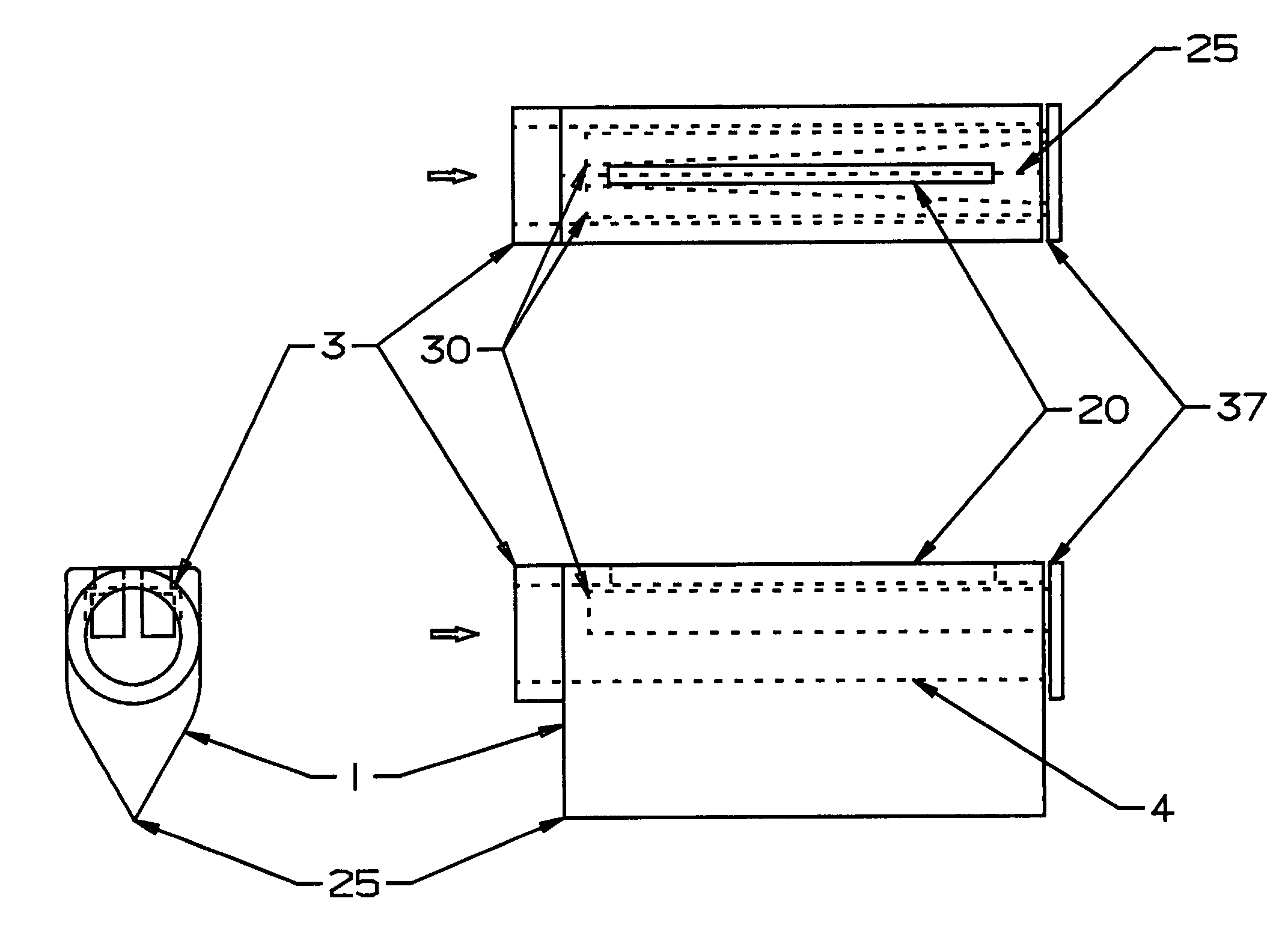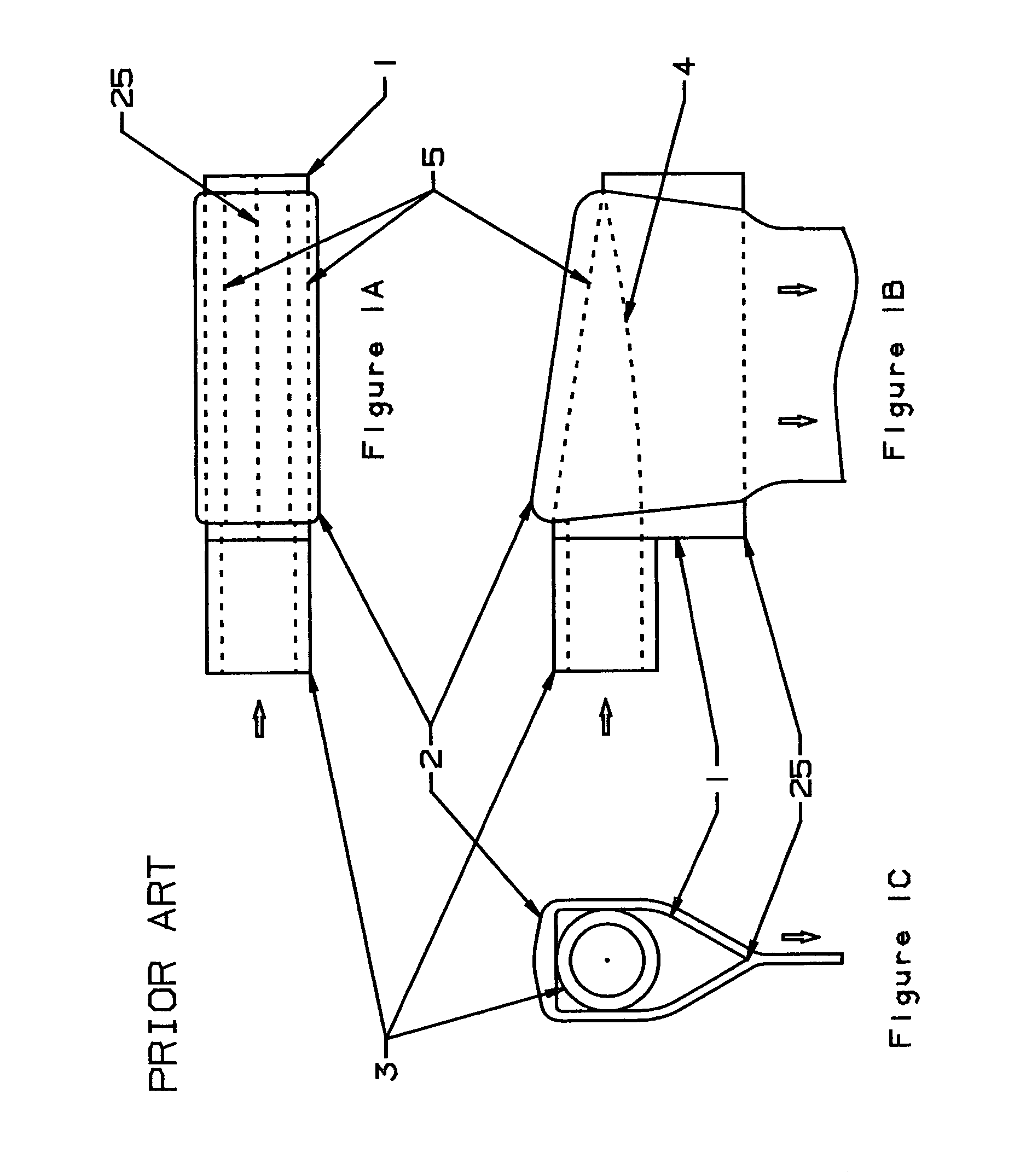Overflow downdraw glass forming method and apparatus
a technology of overflow and downdrawing, applied in the field of glass sheet manufacturing, can solve the problems of limited range of production rates, limited range of apparatus, and limited angle of til
- Summary
- Abstract
- Description
- Claims
- Application Information
AI Technical Summary
Benefits of technology
Problems solved by technology
Method used
Image
Examples
Embodiment Construction
[0123]The present invention teaches that faster, more uniform flow of glass can be accomplished in the overflow glass process by modifying the forming apparatus in substantial ways. This process is currently used for making glass sheets that go into TFT / LCD display devices.
[0124]The glass must have very high surface quality, and sheet glass made using the overflow process has this quality. The overflow process is defined as a process that: 1) moves molten glass into a trough; 2) allows the glass to overflow the sides of the trough; and 3) the glass overflowing each side comes together such that the outside surface of the glass sheet is formed from glass that has not touched the surface of the glass forming equipment (post mixing). This untouched, “virgin glass”, forms an extremely uniform and clean outside surface of the glass sheet. Any modifications to the process or apparatus must provide this high quality glass surface.
[0125]The flow dynamics in all embodiments of this invention...
PUM
| Property | Measurement | Unit |
|---|---|---|
| static pressure | aaaaa | aaaaa |
| static pressure | aaaaa | aaaaa |
| width | aaaaa | aaaaa |
Abstract
Description
Claims
Application Information
 Login to View More
Login to View More - R&D
- Intellectual Property
- Life Sciences
- Materials
- Tech Scout
- Unparalleled Data Quality
- Higher Quality Content
- 60% Fewer Hallucinations
Browse by: Latest US Patents, China's latest patents, Technical Efficacy Thesaurus, Application Domain, Technology Topic, Popular Technical Reports.
© 2025 PatSnap. All rights reserved.Legal|Privacy policy|Modern Slavery Act Transparency Statement|Sitemap|About US| Contact US: help@patsnap.com



